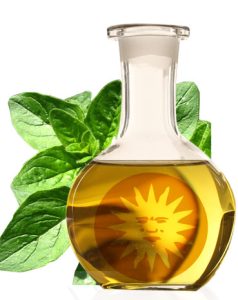Origanum Essential Oilo (Origanum Vulgare Labiatae)
At Esencias Lorente, we are pleased to introduce our natural oregano essence, an aromatic and flavorful ingredient that adds a distinctive touch to a variety of products. Extracted from fresh oregano leaves through a careful distillation process, our essence captures the characteristic aroma and flavor of this aromatic herb.
With its warm and herbal aroma, oregano essence is appreciated for its aromatic properties and versatility in both culinary and perfumery applications. Widely used in the food industry to flavor dishes and in perfumery to add herbal notes to fragrances, oregano essence adds depth and character to a variety of products.
At Esencias Lorente, we are committed to providing high-quality natural oregano essence, produced with care and attention to every detail. Additionally, we are proud to have recognized quality certifications, such as ECO CERT certification and kosher certification, which endorse our dedication to quality and sustainability at every stage of our production process.
Description: Liquid aspect essential oil as well as colour Yellow to brown essential oil. With strong aroma aromatic herbal.
Bloom: In August.
Growth: It grows in Murcia. The 80% of this herb comes from cultivation.
Composition: CARVACROL
Use: Raw material for industrial use intended for the manufacture of flavour and / or gragrances
Technical Table of Oregano Essence
ORGANOLEPTIC INFORMATION
PHYSICO-CHEMICAL INFORMATION
CHEMICAL COMPOSITION (Active Ingredients)
0,5 – 2,0
The essential oil of oregano, derived from the Origanum vulgare plant of the Labiatae family (also known as Lamiaceae), has a complex and varied chemical composition. Some of the main chemical components found in oregano essential oil include:
- Carvacrol: One of the most predominant components in oregano essential oil. It possesses significant antimicrobial and antioxidant properties.
- Thymol: Another important compound with antibacterial, antifungal, and antioxidant properties. It is often found in significant concentrations in oregano essential oil.
- P-Cymene: Contributes to the characteristic aroma of oregano and has antimicrobial properties.
- Gamma-terpinene: Another component that contributes antibacterial and antifungal properties to oregano essential oil.
These are just some of the main components found in oregano essential oil, but there are many other compounds present in smaller amounts that can also contribute to its health-beneficial properties and distinctive aroma.
Description of the Oregano Plant
Oregano, with the scientific name Origanum vulgare and belonging to the Labiatae family, is an aromatic plant native to the Mediterranean region. It is characterized by its small oval-shaped leaves and terminal spike clusters of flowers, which are usually white or pink.
This plant is widely known for its use in cooking, as its leaves have an intense aroma and flavor, making it a seasoning in various culinary preparations, especially in Italian and Mediterranean dishes. Besides its use in the kitchen, oregano also has medicinal properties.
Regarding its benefits, oregano has been traditionally used as a natural remedy for digestive issues, such as stomach discomfort and gas. It contains compounds with antioxidant and antimicrobial properties that can help fight bacteria and contribute to overall health.
Curiosities and benefits of oregano:
- Oregano is rich in compounds like carvacrol and thymol, which have antibacterial and antifungal properties.
- Regular consumption of oregano may have beneficial effects on intestinal health.
This plant has also been used in traditional medicine to relieve coughs and cold symptoms. - Oregano essential oil is used in aromatherapy for its comforting aroma and is believed to have relaxing properties.
- It’s important to note that, while oregano is considered safe in normal amounts used in cooking, excessive consumption can cause adverse effects in some people. It’s always advisable to consult a healthcare professional before using any plant for medicinal purposes.
